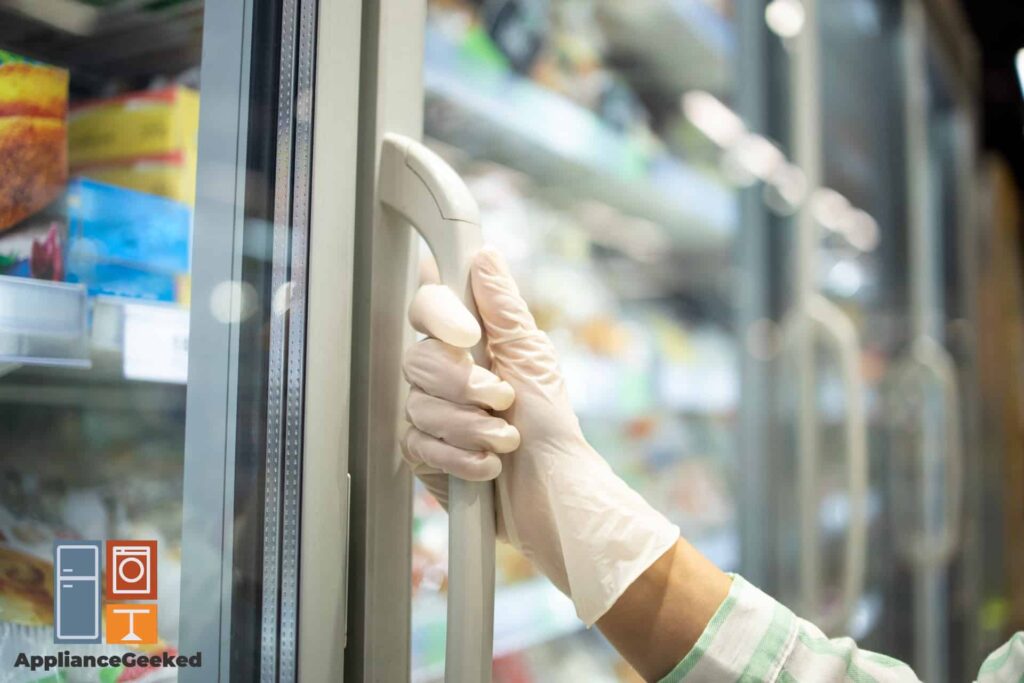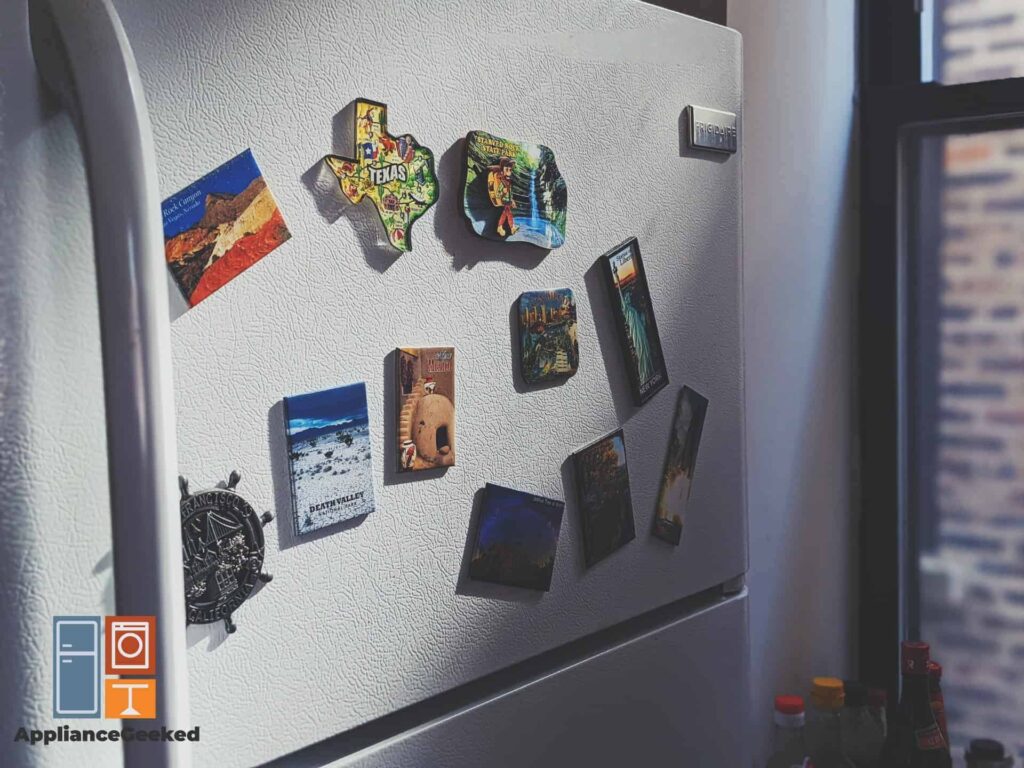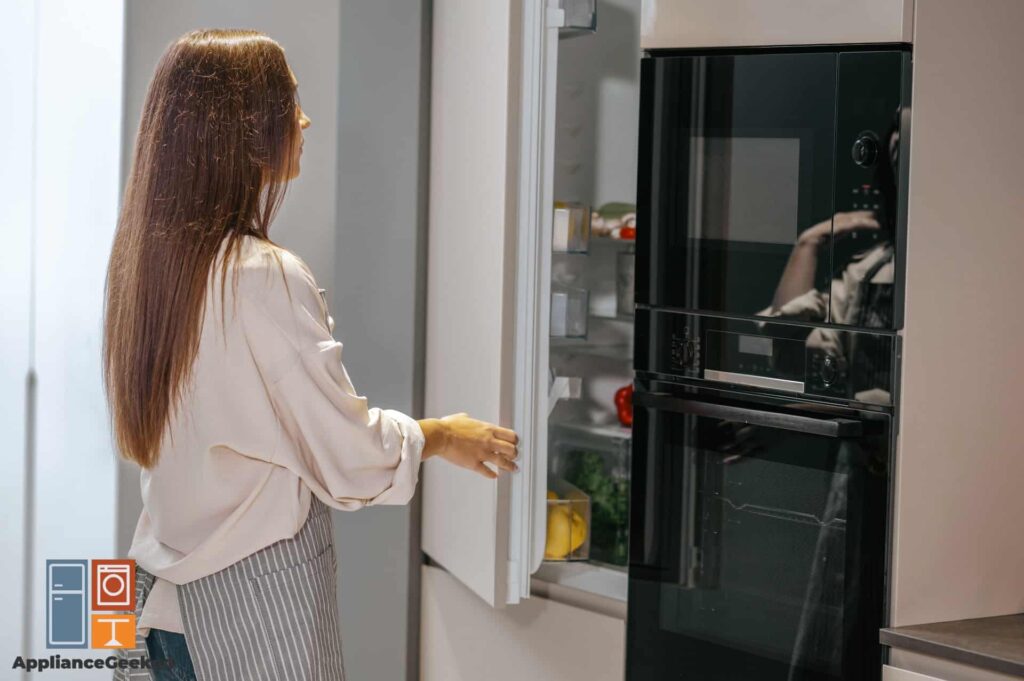You can always trust a Samsung freezer to keep your food at just the right kind of frozen — but not at the expense of giving you frostbite.
When your freezer’s temperature seems to be dropping too low for comfort, there might be something wrong with it.
Unplug your fridge for a moment as we expound on a list of reasons your Samsung freezer is getting too cold and how you can fix it.
Why is your Samsung freezer too cold?
An active ice maker or a low-temperature setting can cause your Samsung freezer to become too cold.
To set your freezer’s temperature back to normal, connect the ice maker to a water supply or turn it off completely. Afterward, adjust the freezer’s temperature accordingly.
It takes at least 24 hours for your freezer to stabilize any temperature changes. If your frost continues to build up in your freezer after adjusting the temperature, faulty temperature parts may be contributing to this issue.
Common Causes of a Samsung Freezer That’s Too Cold
Troubleshooting a Samsung freezer that’s freezing up may take a couple of days, as you’ll have to observe temperature changes closely to pinpoint where the issue lies.
But don’t worry; we’re here to assist you every step of the way.
We’ve listed out all the possible reasons that are causing your Samsung freezer to freeze up, starting from simple temperature settings to more complicated ones like a faulty thermostat.
For more details, refer to the table below.
| Cause | Solution |
| Temperature Settings Too Low | Set the temperature for the freezer compartment to at most 5°F or -15°C. |
| Active Ice Maker | Check if the ice cube bin is empty. Connect a water line directly to the ice maker to allow it to continue producing ice cubes without dropping the temperature. |
| Power Freeze Activated | Press and hold the Power Freeze button until the light for the setting goes off. |
| Frost Buildup | Defrost your freezer using Force Defrost. Check if the freezer door’s rubber seal is loose. Clean it out or replace it if necessary. Clean the area near the air vents at the back of your freezer. |
| Defective Air Damper | Access the control panel at the back of the fridge. Check if the air damper can move freely by flapping it by hand. If it has trouble opening and closing, replace it. |
| Defective Temperature Sensor or Thermistor | Check the temperature sensor or thermistor for continuity. If there’s no continuity, replace it. |
| Faulty Thermostat | Check the thermostat for continuity. If there’s no continuity, replace it. |
| Defective Control Board | Disconnect the control board from the fridge assembly and inspect the board for any burn marks or signs of shorting out. Replace the board if necessary. |
We’ll shortly be diving into each one of these issues to help you understand why they occur.
As the troubleshooting process gets more technical, remember to unplug your refrigerator before accessing the control panels.
Temperature Settings Too Low
When you notice your freezer’s temperature seemingly dropping, the first place you should double-check is your freezer’s set temperature.
Your Samsung fridge uses a twin cooling system with separate evaporators for the fresh food compartment and the freezer.
This allows the fridge’s electronic control to maintain independent temperatures and humidity for either compartment.
As a result, you can store your food in apt conditions without worrying about their odors mixing.
Solution: Check the freezer’s temperature and adjust it accordingly. The ideal temperature for the freezer compartment is no higher than 5°F or -15°C.
We recommend tuning the temperature in increments to see which temperature would be suitable for you.
Do note that changes in temperature in your fridge take approximately 24 hours to stabilize.
Furthermore, we suggest rearranging the items in your freezer and taking inventory before adjusting temperatures. More items in the freezer mean lower temperatures.
If you set the temperature of the freezer below 0 degrees but have less than five items stored inside, you’ll likely feel the cold stronger than if you have more than five items in there.
It’s also important to cool your food before you put it in the freezer, as storing warm food in this compartment may signal the freezer to enter defrost mode.
Moreover, keep your food in tightly sealed containers when storing them in the freezer. This prevents moisture from your food from building up inside the compartment.
Active Ice Maker
Your Samsung fridge has a built-in ice maker that can produce an average of 120 ice cubes daily.
When the ice maker is active, it drops the freezer’s temperature below what you initially set. It does this to speed up the ice-making process, which lasts for approximately 90 minutes.
Once the ice cube bin is filled, your freezer will return to its original temperature. The process restarts when your fridge detects that the ice cube bin is empty again.
This can happen even if your fridge’s ice maker isn’t located in the freezer compartment because the fridge’s cooling systems are linked.
Solution: Check if the ice cube bin is empty.
Turn off the ice maker by pressing and holding the ice maker button on the control panel.
On some models, the toggle for the ice maker is found in the fridge’s smart control display. You can disable the ice maker from the screen display or via the SmartThings application.
Meanwhile, if you want the ice maker to continue running but at a higher temperature, check if the fridge’s water line is connected properly.
With an incoming water supply, your freezer will return to its initial temperature as the ice maker continues freezing ice cubes.
Power Freeze Activated
While your Samsung fridge’s ice maker takes 90 minutes on average to finish freezing a tray of ice cubes, it also offers a method to speed up this process by setting the freezer to the lowest temperature it can get.
This is known as the Power Freeze mode (or Power Cool in other models). When this is activated, your freezer will ignore its set temperature in favor of colder limits that can freeze ice cubes faster within the next two and a half hours.
Solution: To check if Power Freeze or Power Cool mode is activated, refer to your Samsung manual for instructions.
Different fridge models have different ways to turn Power Freeze off.
On models with a control board panel with buttons, a Power Freeze button should be included. You can press and hold this button until the light turns off.
Frost Buildup
While your freezer’s primary task is to keep food frozen, frost buildup around the area can cause the temperature in your freezer to be more frigid and ruin your food.
The buildup is usually a result of negligent habits. In this case, being mindful of how you store your food and regularly cleaning your fridge would be the best course of action.
The most common causes for frost buildup are an open freezer door, hot or warm food, and blocked air vents.
Solution: Defrost your freezer by activating Force Defrost. This setting melts the ice buildup faster than if you manually defrost your freezer.
Afterwards, you can keep your freezer-storing habits in check by being mindful of the following:
- Open Freezer Door: As a general rule, don’t leave the fridge or freezer door open for more than a minute. Avoid opening and closing the fridge or freezer several times over an hour.
Regularly check if the freezer door’s rubber gasket is intact by running a hand near the door after you close the freezer and checking for escaping air.
If air can escape freely, it can also enter the same way. Air from outside the freezer can turn into frozen water vapor or frost.
If you feel air escaping from the side of the freezer door, replace the door gasket. Remember to clean this area thoroughly whenever you defrost and clean out your fridge. - Hot or Warm Food: Cool your food down and store them in a tightly sealed container before putting them in the freezer. Hot or warm food may disrupt the temperature of the freezer and cause the food to spoil faster.
The containers can also insulate moisture from the food, which, if left unsealed, can contribute to frost buildup.
- Blocked Air Vents: Check the back of your freezer — where the air vents are located — for any frost buildup.
Don’t store items too far back in the freezer compartment. Leave a gap of at least 2 inches between your food and the back of the fridge.
Your freezer’s air vents regulate airflow between the freezer and the fridge to allow enough cold air to flow in and out of the freezer.
When these vents are blocked, they can trap cold air inside and speed up frost formation.
Defective Air Damper
Samsung refrigerators use an air damper to release cold air into their compartments. In other models, this is called the freezer control.
The air damper opens and closes to regulate the air it releases into the freezer. When it gets stuck open, it can only keep releasing cold air into the freezer compartment.
Solution: To check if the air damper is stuck, you need to access the control panel at the back of the fridge.
Once you have access to the air damper, flap it by hand to check if it can move freely. If the air damper has trouble opening and closing, replace it.
Defective Temperature Sensor or Thermistor
Samsung refrigerators with an electronic control board regulate their temperature via temperature sensors or thermistors. They send signals to the main control board when the freezer changes temperature.
When the freezer reaches the temperature you set, the thermistor taps the main control board to stop the cooling process. Likewise, during defrosting, the thermistor signals when the freezer gets warm enough.
A defective thermistor might send the wrong signals to your freezer’s main control board or fail to get the correct reading of the freezer’s temperature altogether.
Solution: Locate the freezer’s thermistor in the defrost assembly and check it for continuity using a multimeter. If there’s no continuity, replace the thermistor.
Faulty Thermostat
If the issue doesn’t seem to lie in your freezer’s thermistor, the next thing you should check is its thermostat.
Like thermistors, the thermostat reacts to temperature changes in your freezer.
When the thermistor taps the main control board when your freezer reaches a set temperature, it initiates the cooling or defrosting cycles by powering the evaporator fan and the compressor.
When the thermostat fails, it might signal the fan and compressor to run a cooling cycle indefinitely.
Solution: Locate the freezer’s thermostat in the defrost assembly and check it for continuity using a multimeter. If there’s no continuity, replace the thermostat.
Defective Control Board
When none of the above seems to be causing your freezer to freeze up, the last thing you should check is the fridge’s overall control board.
The control board functions as the brain of your refrigerator and is the first to respond to and carry out the commands the other parts communicate.
As such, the control board is designed to be high-functioning and rarely ever breaks down, unless it short-circuited or sustained damage because of a power surge.
When the control board fails, it can’t be repaired; only replaced.
Before troubleshooting the control board, troubleshoot the other items on the list first and double-check that none of them can resolve the overcooling issue.
Solution: Disconnect the control board from the fridge assembly and inspect the board for any burn marks or signs of shorting out.
Replace the board after confirming that the other parts of your freezer don’t resolve the issue.
Among the issues your Samsung refrigerator or freezer might face, overcooling is one of the few — if not the only — that requires trial and error.
Adjusting your freezer’s temperature takes time to settle, not to mention how you’ll have to do it over and over until you reach what’s ideal for you.
If this seems too tedious, your best shot at addressing the issue is to drop your fridge off at service.
Though, we recommend trying out the easier troubleshooting methods first. You’ll never know when you’ll face the same issue, and it’s always safer to be prepared for trouble.




